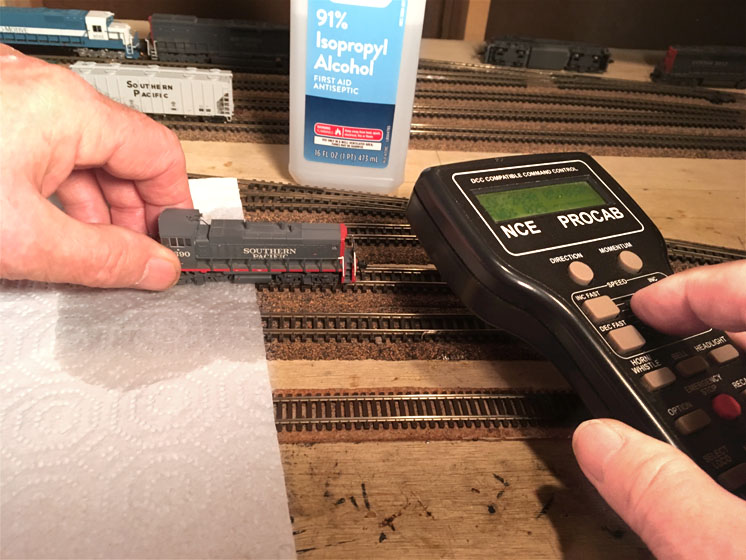
Filthy track can look clean
The dirt on rails and wheels is usually a mixture of oxidation, lubricants, and dust that isn’t particularly visible. And the problem is that this invisible mix is an insulator. And if it gets transferred to the treads of our locomotives’ pickup wheels, the problem is compounded.
Tiny footprints
The Achilles’ heel in the circuit that powers our locomotives is the tiny footprints between the pickup wheels and the rail. This is true for locomotives in all scales, but even more so for N scale because of its small size. The footprints are about the same in any scale, but the larger scale engines weigh more and so the wheels press down harder, giving better contact. (An HO engine of the same prototype weighs about eight times as much as its N scale equivalent.)
An irony here is that the more realistic a wheel is, the smaller the contact footprint. A prototypically correct model wheel has a tapered tread (the relatively flat running surface of the wheel) and a fillet (a curved surface that completes a smooth transition from the tread to the flange.)
All the wheels in a train have these characteristics, and without them the cars wouldn’t be able to negotiate curves smoothly, if at all. On a curve, the outside wheel must travel farther than the inside wheel in the same period of time. It does so by riding up on the fillet, which in effect makes the wheel radius larger.
Learning the basics. How do modelers learn about this problem and how to address it? They can ask at their hobby shop or ask model railroading friends, if they’re fortunate to have either of these precious resources. They can also ask Siri or her ilk on online devices, or they can buy a book or two on model railroading basics. (Ahem, it just so happens that MR’s publisher, Kalmbach Media, offers several.) When you’re starting out in this hobby, you need a lot of information, and you need it fast.
My friend and fellow N scale layout builder Steve Miazga [See “Missabe Junction revisited” in the September 2018 Model Railroader – Ed.] told me that when he was starting, his dealer told him to do nothing but read for six months. I think that was good advice, although probably a few months less might suffice. You might find direction, and you’d almost certainly learn how to clean wheels and track.
Cleaning track
Many solutions have been offered for keeping track clean, but my go-to over the years has always been the Bright Boy cleaner sold by Walthers. It looks rather like an ink eraser, and you just rub the track with it. Every now and then you need to vacuum the track, as tiny crumbs of rubber tend to fall off onto the roadbed. In N scale these can prevent a switch point from closing completely.
Cleaning wheels
The best way to keep wheels clean is to keep your track clean. Still, you’ll find yourself having to clean wheels now and then, especially if you’ve been working on the layout. Paint, glue, plaster dust, sawdust, and soldering flux all like to find their way onto locomotive drivers.
I clean drivers with the old tried-and-true paper towel and isopropyl alcohol method. First, you moisten with alcohol a part of the towel near the edge, then lay that wet part across the track and spin one set of drivers on it while powering the locomotive from the truck that’s still touching the rails. If the wheels are especially dirty, you may have to scrape some crud off the driver treads just to get them going.
I then run the wheels on a dry part of the towel so no liquefied gunk will set up and put me right back in the dirty wheel situation.
Once track and wheels are clean, the best part is keeping them clean by running your trains a whole lot, which is a lot more fun than cleaning track and wheels!
This article originally appeared in the July 2019 Model Railroader – Ed.






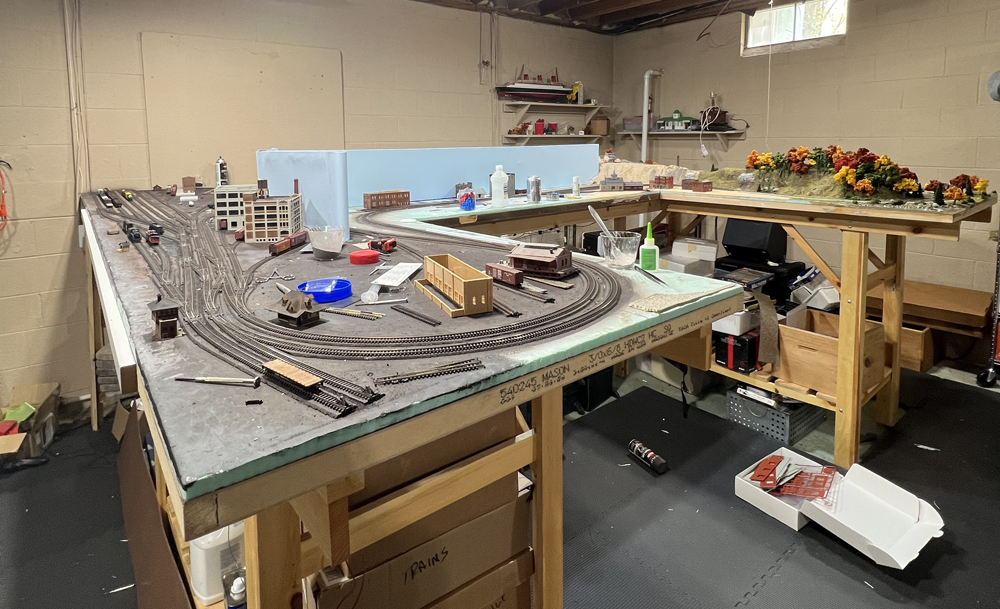
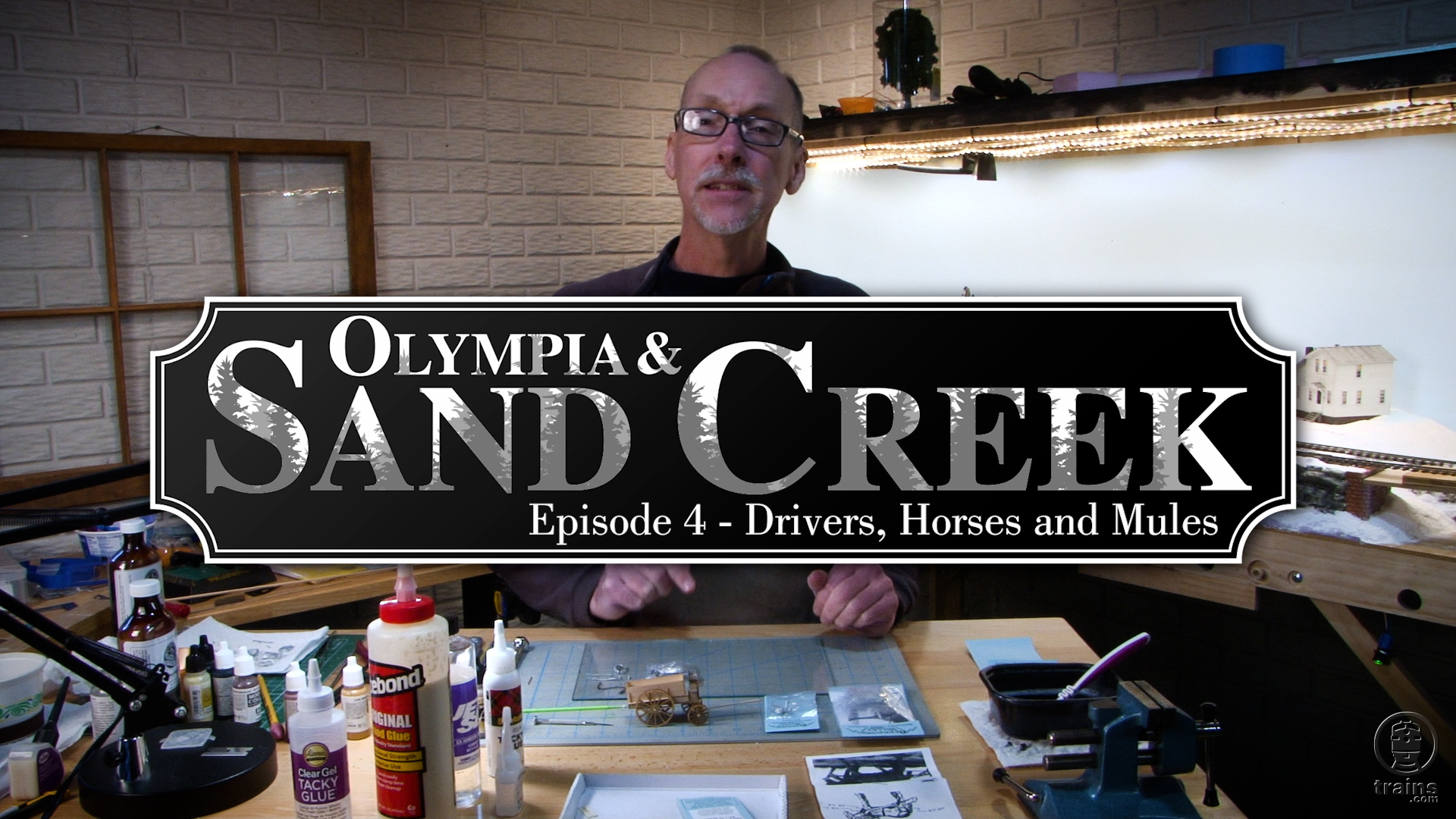
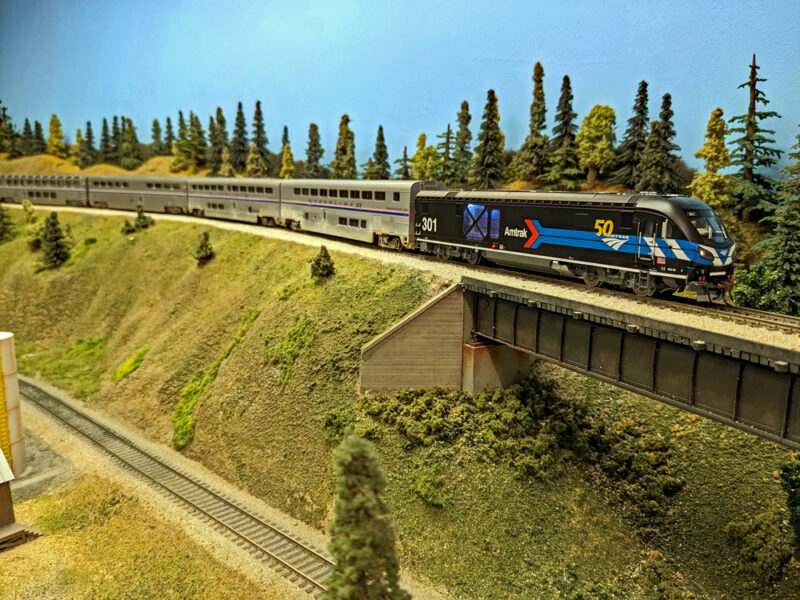
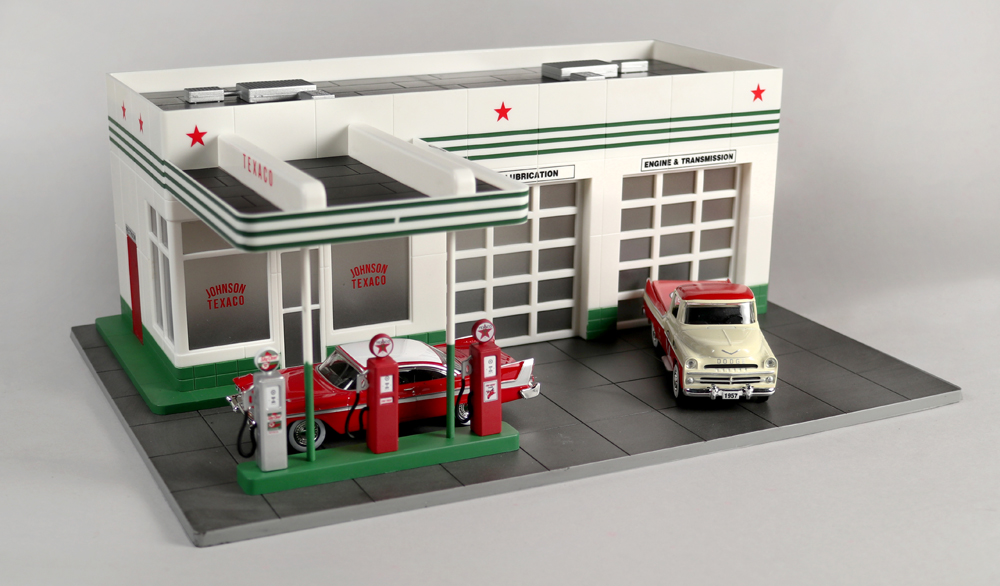




I have recently shifted to dry methods. After cleaning my eyeglasses with “microfiber lens wipes”, I let them dry, and use them to wipe the rails, especially on turnouts. The white wipe shows you what you have picked up. I also have implemented using wine corks cut in half to clean the tracks per a recent MR article. I won’t go into where the wine cork supply comes from. Also, a track cleaning train using masonite pads, that I be sure to keep clean with sandpaper frequently. Finally, I use a strip of the lens wipes over the roller on an Aztec cleaning car. BHBF.weebly.com
Good advice, run your trains daily. Put som Woodland dustmonkies on a car or two, that will help a lot. I have them on my cabooses. Woodland art. TT4570 .
WD40 would be a better choice that isopropyl alcohol. The alcohol is a polar material and will have the wheels dirty much sooner than the non polar WD40. CRC contact cleaner and WD40 contact cleaner are even better choices. I suggest using them with a paper towel or old T shirt to wipe the track instead of the Bright Boy. As the Bright Boy scratches the rail that dirt could then attach too. I just run the trains and that seems to give good results.
Agree with using a solvent to clean the rails rather than an abrasive block. Even micro scratches will catch the dirt. There are cars that drip solvent onto a pad as you pull it around the layout, so even hard to reach track can be cleaned. You may also find it worthwhile to clean the car wheels as well since they will accumulate dirt and deposit it back on the track. Moisten that paper towel again and run the cars over it several times until the wheels are clean. This works in larger scales but you might need to use a tissue for N scale. There have been many track cleaning ideas over the years so it’s proof that no one way is easy and works really well. Try several and keep the one that seems to work best for you, but do it! Stalling trains can take the fun out of model railroading.